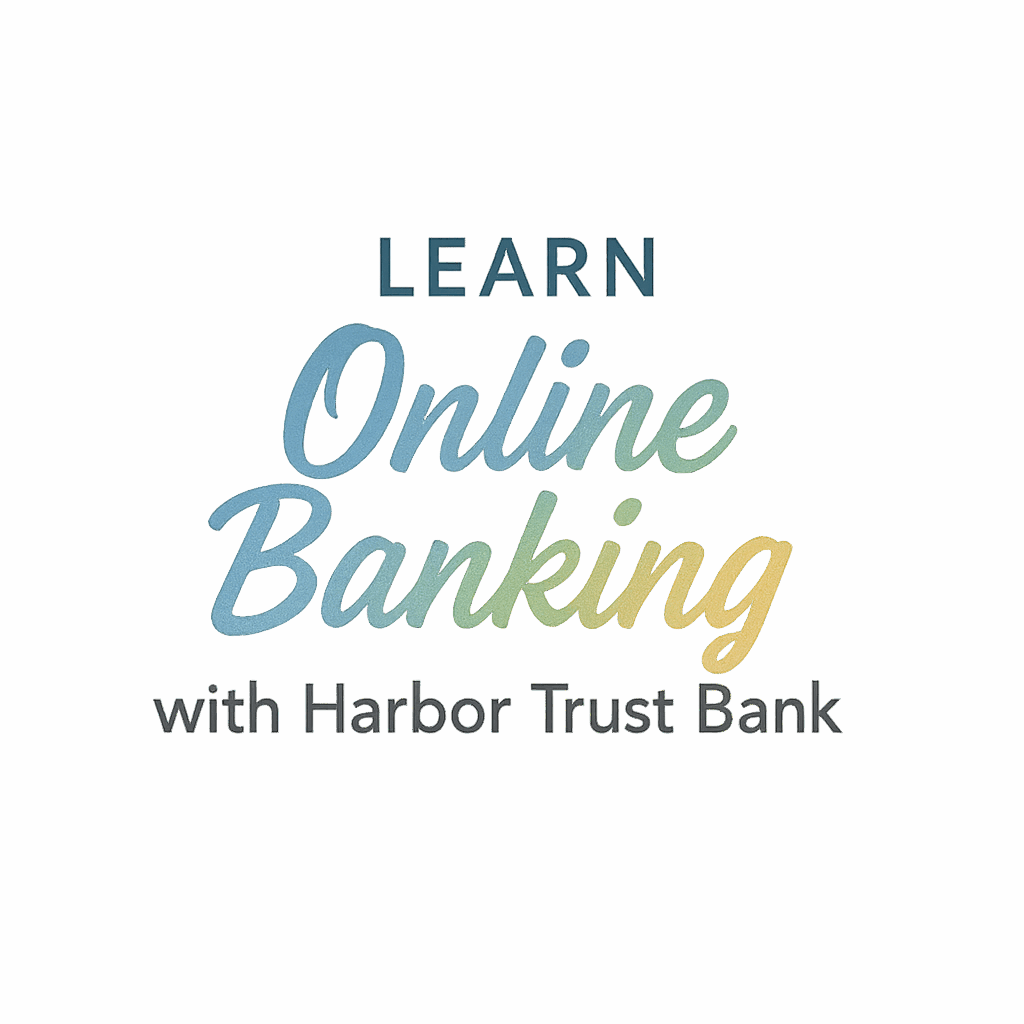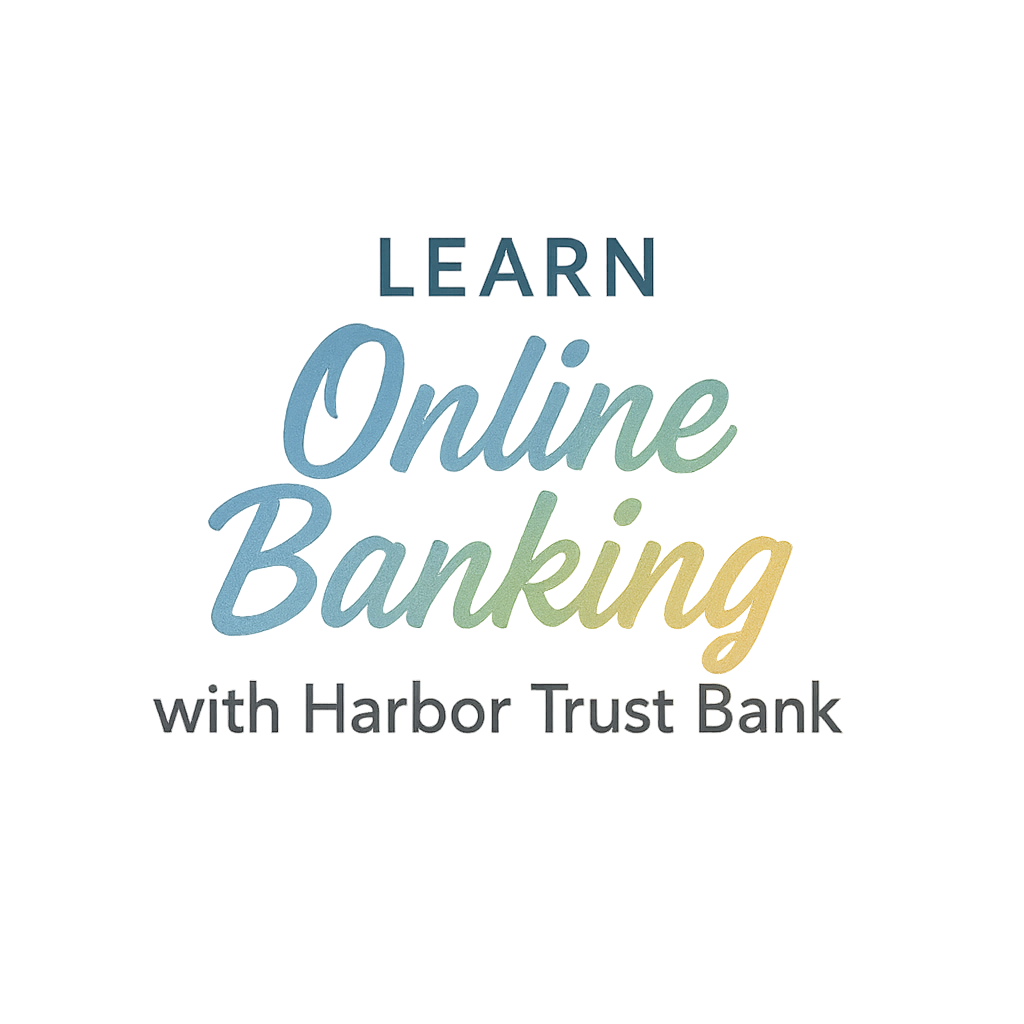Online banking is no longer a luxury—it’s a necessity. But for first-time users, the digital landscape can be a bit overwhelming. If you’re just dipping your toes into the world of online finance, don’t worry—we’ve got your back. This guide offers 8 practical, easy-to-follow online banking tips that will help you stay safe, confident, and in control of your finances.
Whether you’re opening your first account with Harbor Trust Bank or just getting started with online features, this post will walk you through all the essentials.
Introduction
So, you’ve decided to go digital. That’s great! Online banking makes it super convenient to manage your money from anywhere. No more waiting in long lines or adjusting your schedule around bank hours. But with convenience comes responsibility.
Let’s walk through 8 online banking tips specifically for first-time users to help you get the most out of your new setup—and stay protected while doing it.
1. Choose a Secure Online Banking Platform
Why Security Should Be Your Top Priority
The first thing to consider when starting online banking? Security. With your sensitive financial data at stake, choosing a platform with top-notch protection is non-negotiable.
Look for features like:
- End-to-end encryption
- Real-time fraud monitoring
- 24/7 customer support
These ensure that your money—and your identity—stay protected.
Use Trusted Platforms Like Harbor Trust Bank
A platform like Harbor Trust Bank is built with security and user-friendliness in mind. They offer everything a beginner needs, including account setup guidance, advanced features, and educational resources.
2. Set Up Your Online Banking Profile Correctly
Step-by-Step Account Setup
When you’re signing up for online banking, slow down and double-check every field. A simple typo in your email or phone number could lock you out of your account later.
Pro tip: Use a recovery email and phone number you check regularly. And always choose a username you’ll remember—but that doesn’t give away personal info.
Visit the Harbor Trust Getting Started Guide
For beginners, Harbor Trust’s “Getting Started” portal breaks down the process. Whether you’re setting up a personal account or a shared family profile, they’ve got it covered.

3. Create a Strong and Unique Password
Password Tips for Beginners
Still using your dog’s name and your birth year? Time for an upgrade.
A strong password should include:
- Uppercase and lowercase letters
- Numbers
- Special characters
- No obvious words or patterns
Example: 9$Tru5tB@nk!2025
Avoid These Common Mistakes
- Don’t reuse passwords across multiple accounts
- Never include your full name or email
- Avoid writing it down where others can find it
And guess what? Harbor Trust’s security page has even more tips on account security.
4. Enable Two-Factor Authentication (2FA)
Why 2FA Is a Must for First-Time Users
Two-factor authentication (2FA) is like adding a second lock to your front door. Even if someone steals your password, they won’t get in without a verification code sent to your phone or app.
How to Turn It On Easily
Most banks, including Harbor Trust, let you activate 2FA in your account settings. Set it up once—and enjoy peace of mind for years to come.
5. Understand the Features of Online Banking
Explore All the Tools You Have Access To
Online banking isn’t just about checking your balance. You can:
- Pay bills automatically
- Set spending limits
- Schedule transfers
- Track your budget
Learning what tools are available will help you stay financially organized from the start.
Check Out Harbor Trust’s Advanced Features
From family budgeting tools to shared account access, Harbor Trust makes it easy to handle complex financial needs. They even have options for couples and families.
6. Monitor Your Account Regularly
Set Up Notifications and Alerts
The best way to catch fraud or errors early? Set up instant alerts for:
- Large withdrawals
- New device logins
- Failed login attempts
You can easily manage these under your bank’s notification settings.
Tips from Harbor Trust Tips & Tricks
Want a shortcut? Harbor Trust offers a complete list of alert recommendations in their tips section. It’s especially useful for new users who aren’t sure what to monitor.
7. Avoid Public Wi-Fi While Banking Online
Stay Safe from Hackers and Snoops
Public Wi-Fi = Public risks. Coffee shops, airports, and hotels are prime spots for hackers to intercept your data.
Use VPNs for Extra Protection
If you absolutely must bank online using public internet, use a VPN (Virtual Private Network). It encrypts your data and adds an extra wall of security.
And of course, never save your login credentials on shared or public devices.
8. Know What to Do If Your Account Is Compromised
Immediate Steps to Take
If you notice suspicious activity:
- Change your password immediately
- Contact your bank’s fraud department
- Review your recent transactions
- Freeze or lock your account if necessary
Use Harbor Trust’s Account Security Resources
Harbor Trust offers a detailed response guide under their security tag. They’ll walk you through every step, from reporting fraud to recovering lost funds.
Conclusion
Getting started with online banking doesn’t have to be scary. With the right platform and a few smart habits, it can be one of the most empowering financial tools in your life. Use these 8 online banking tips to build your confidence, stay secure, and take full control of your finances from day one.
For extra help, always refer to Harbor Trust Bank’s helpful resources—especially if you’re a beginner or just getting started.
Frequently Asked Questions (FAQs)
1. Is online banking safe for beginners?
Yes! As long as you follow basic security steps—like strong passwords and 2FA—online banking is just as safe as traditional banking, if not safer.
2. Can I use online banking on my phone?
Absolutely. Most banks, including Harbor Trust, have secure apps with all the same features as desktop banking.
3. What happens if I forget my password?
You can usually reset it via your email or phone. Just follow the bank’s secure password recovery process.
4. Are online banking apps different from websites?
They offer similar features, but apps are optimized for mobile use and may have additional security like fingerprint login.
5. How often should I check my bank account online?
Ideally, check it daily or a few times a week—especially if you’ve set up transaction alerts or automated bill pay.
6. Can I use shared accounts with online banking?
Yes, platforms like Harbor Trust offer shared account options for families or couples.
7. What should I do if I suspect fraud?
Act fast: change your password, contact support, and review recent transactions. Visit Harbor Trust’s compromised account guide for next steps.


